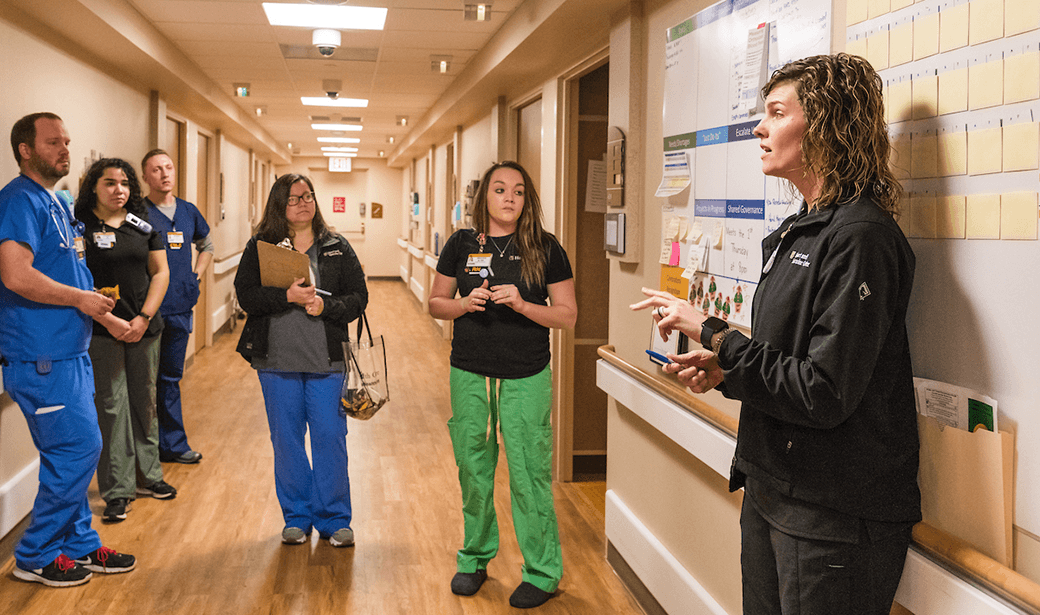It is 10:30 a.m. on a Monday, and nurses on the cardiovascular floor at MU Health Care’s University Hospital gather around a large white board affixed to the wall near the nurse’s station.
One of the nurses hands out mini chocolate bars to her co-workers for a mid-morning snack. While they savor the sweet treat, they start what has become a daily ritual: a strategic huddle to gather feedback and create immediate action items to improve patient care.
“It’s in the moment. It gives everyone an opportunity to ask questions and get immediate answers,” said clinical manager Melissa Dowler, MSN. “Being able to talk about it in the huddle allows everyone to understand the why behind what we’re doing.”
The daily huddles are part of MU Health Care’s focus on continuous quality improvement and commitment to quality care and patient safety. The huddle meetings are short — usually less than 10 minutes — and the staff makes each minute count. The care team discusses expected admissions and discharges for the day, staffing, projects in progress, educational opportunities, patient concerns and safety initiatives.
“We talk about any escalation issues, so the staff is able to talk about concern for a patient — whether their blood pressure is declining or they are going up on oxygen needs,” Dowler said. “As nurses move through their day, they will be aware of which patients on the floor may need additional attention.”
The daily huddles allow leaders to get in front of the entire staff more quickly to break down a process and discuss any concerns.
“If we have a patient fall or have a big event on the unit, we review what happened, discuss what needs addressed, and we work to fix the process so it’s in place for the next shift,” Dowler said.
The cardiovascular team started the daily meetings in December after Dowler observed how another Missouri hospital implemented the huddles. In the months since implementation at MU Health Care, Dowler’s team has made a few adjustments. The system refined by the cardiovascular team eventually will expand to all units and all levels of hospital leadership.
“Anything that’s brought up on a unit level that a manager recognizes is a safety concern across departments is elevated to the next tier, and the information spreads more quickly because there are representatives from every unit there,” health project manager Morgan Rioux-Forker said. “The action gets assigned to the most appropriate place. If a director of nursing can solve it, they’ll take it, communicate about it and create an action plan. If it can’t be fixed at that level, it may go all the way to the third tier and the C-suite administrators.”
MU Health Care’s commitment to quality involves setting high goals, implementing systematic changes in processes, constantly measuring performance and making improvements to increase the effectiveness and efficiency of processes and procedures. It is a constant, dynamic and evolving cycle that never ends.
Dowler said she’s already noticed how the daily meetings can quickly remove obstacles for her staff. She pointed out multiple examples where concerns raised during huddle were addressed almost immediately.
Patient safety manager Jane Terhune said employees and patients benefit from the new huddle.
“The staff appreciates having the time with their leadership, being able to escalate concerns, communicate them and get solutions,” Terhune said. “You can see projects in progress and get weekly feedback on suggestions. The huddles have a positive impact on employees’ engagement while also benefitting our patient care.”



